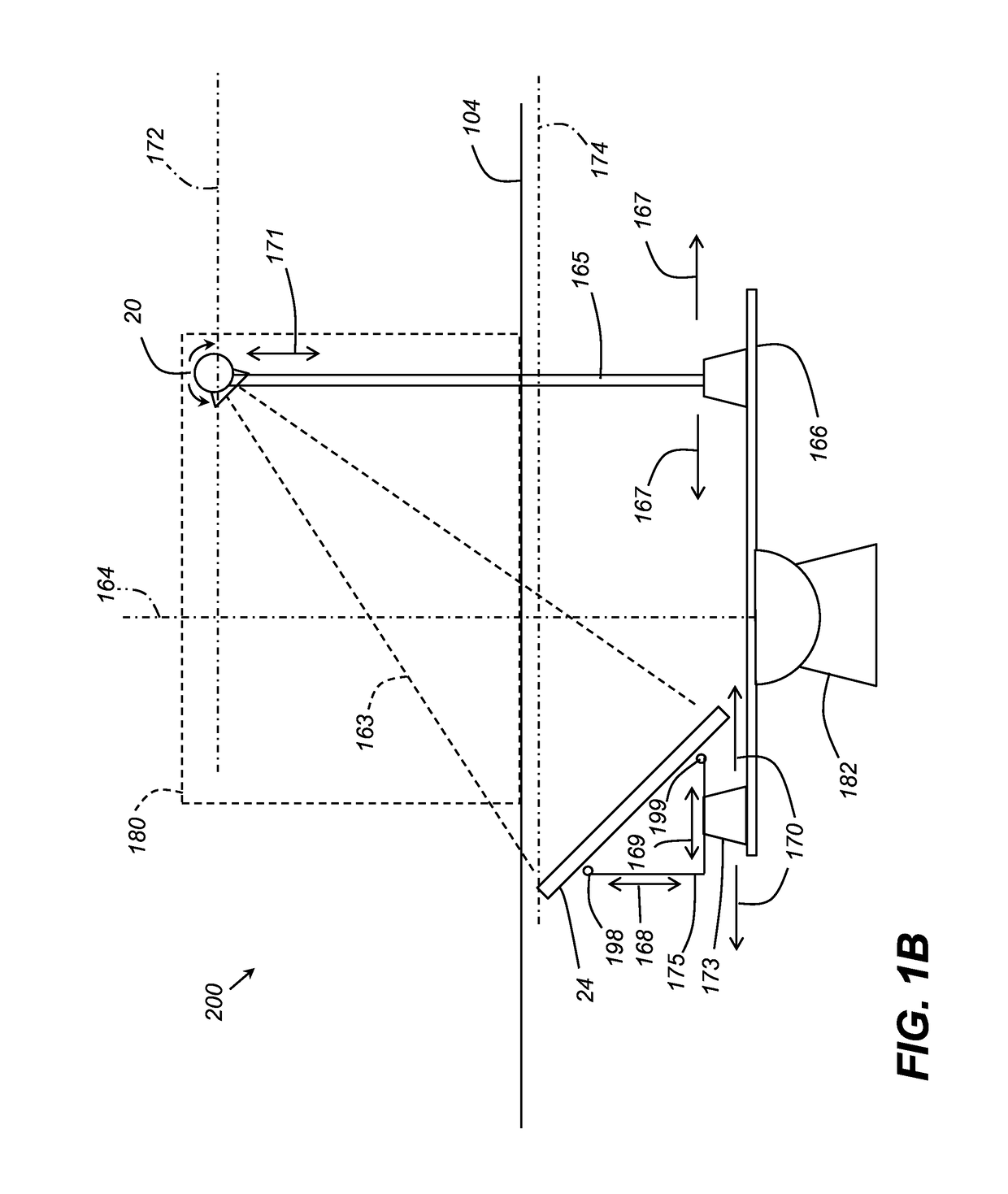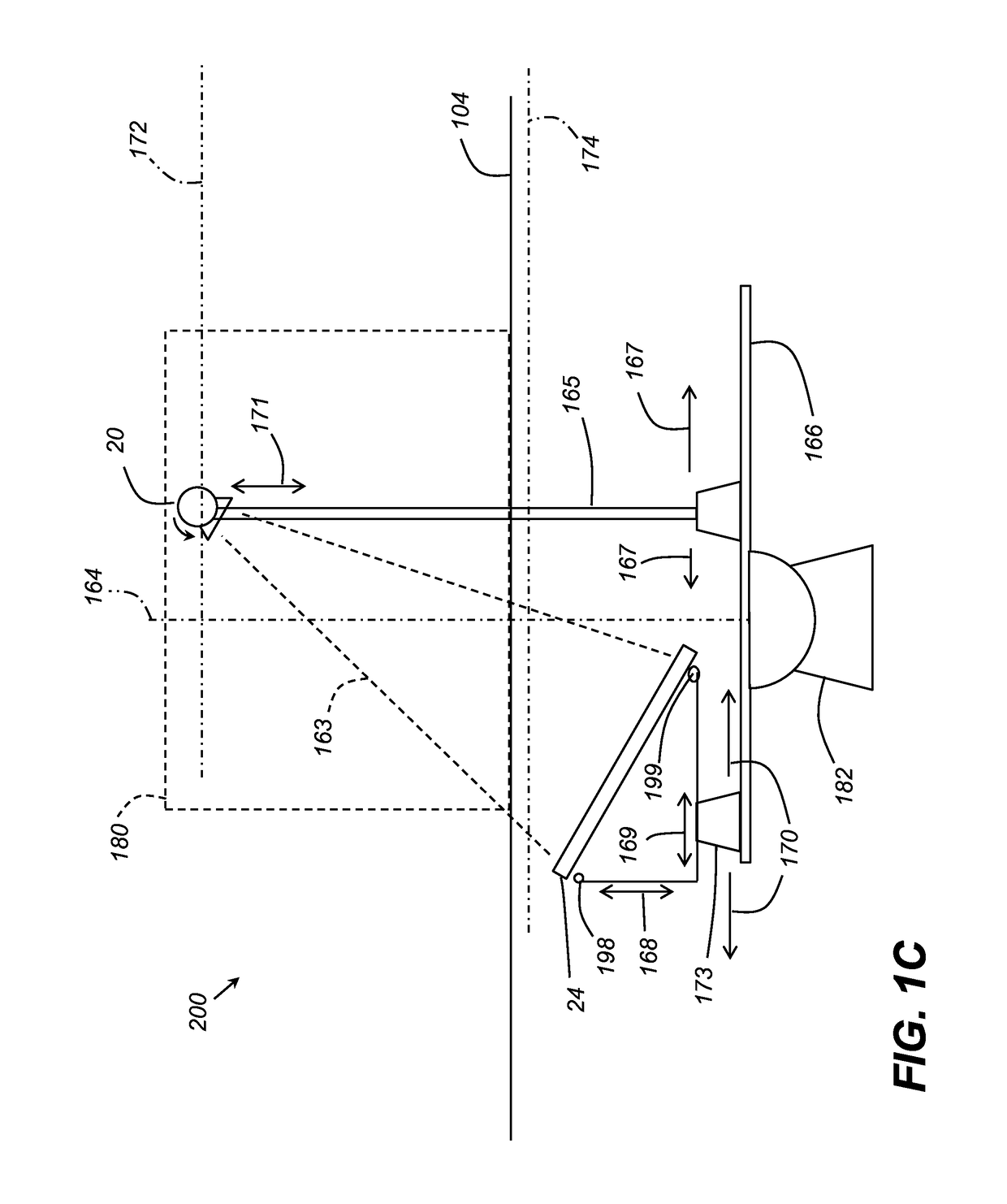Extremity imaging for animals
a technology of extreme imaging and animals, applied in the field of standing subjects radiographic imaging, can solve the problems of cbct damage, detector or source position liable to receive a kick, and equines are finicky animals and tend to react erratically
- Summary
- Abstract
- Description
- Claims
- Application Information
AI Technical Summary
Benefits of technology
Problems solved by technology
Method used
Image
Examples
Embodiment Construction
[0038]It may be helpful to briefly explain a prior art embodiment of an animal imaging system before describing the novel embodiment of the present invention that is illustrated beginning with FIG. 1B. With reference to the prior art embodiment of FIG. 1A, there is illustrated an embodiment of an exemplary radiographic extremity imaging system 100. The extremity imaging system 100 may include a substantially circular support base 102 having a generally planar top surface 104 to provide a platform for supporting a subject animal, such as its forelegs, hind legs, or both. The support base 102 may be configured to be rotatable about a central axis through the center of the support base 102, as described herein. Attached to the support base 102 may be a platform 106 having a generally planar top surface 108 to support an animal to be imaged, such as its forelegs or hind legs. The platform 106 may be movable about the perimeter of the support base 102 to assist in positioning a subject a...
PUM
 Login to View More
Login to View More Abstract
Description
Claims
Application Information
 Login to View More
Login to View More - R&D
- Intellectual Property
- Life Sciences
- Materials
- Tech Scout
- Unparalleled Data Quality
- Higher Quality Content
- 60% Fewer Hallucinations
Browse by: Latest US Patents, China's latest patents, Technical Efficacy Thesaurus, Application Domain, Technology Topic, Popular Technical Reports.
© 2025 PatSnap. All rights reserved.Legal|Privacy policy|Modern Slavery Act Transparency Statement|Sitemap|About US| Contact US: help@patsnap.com



